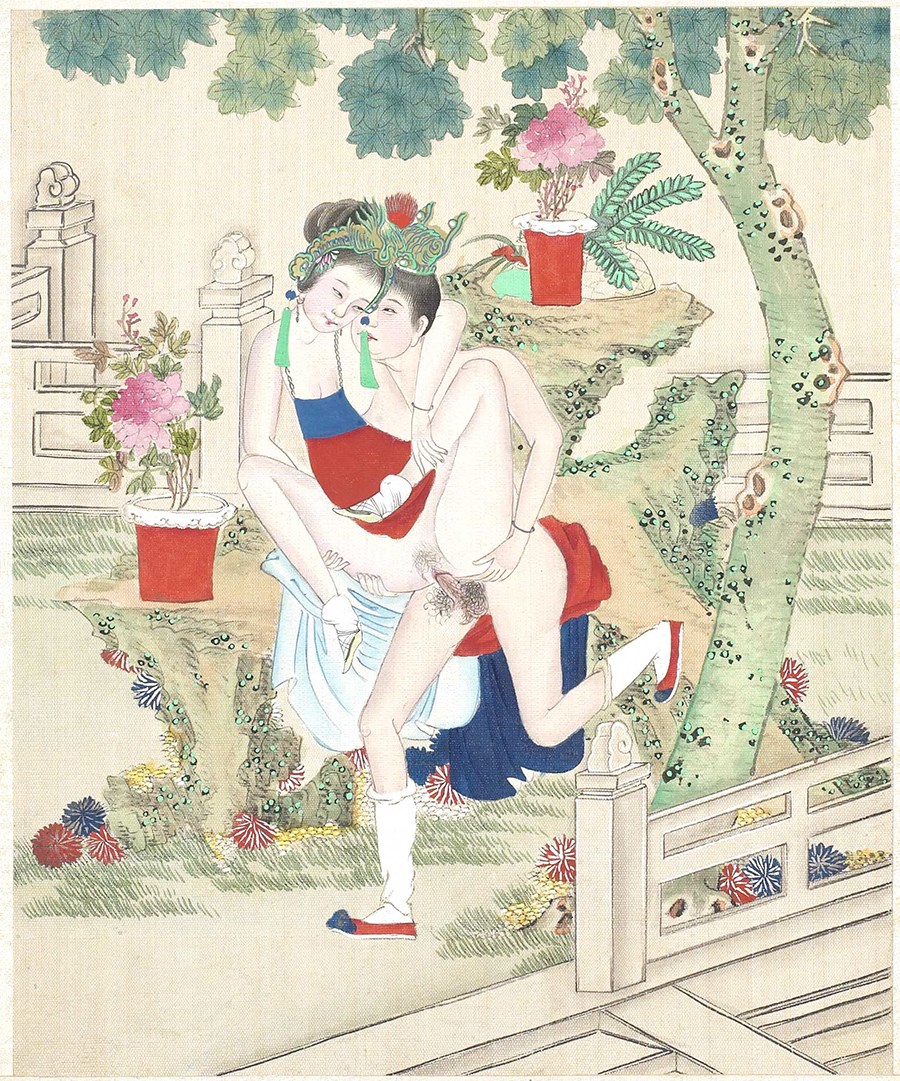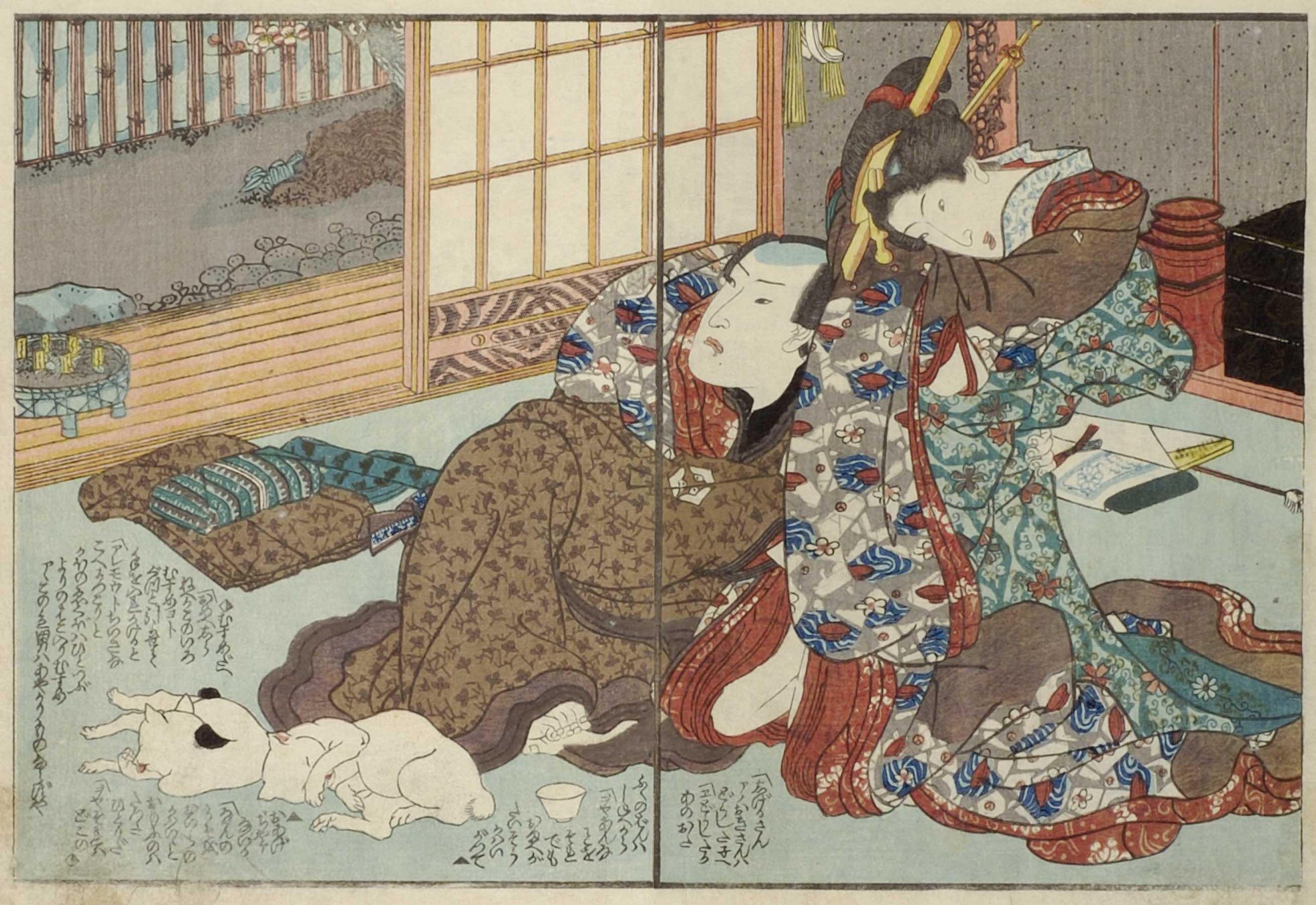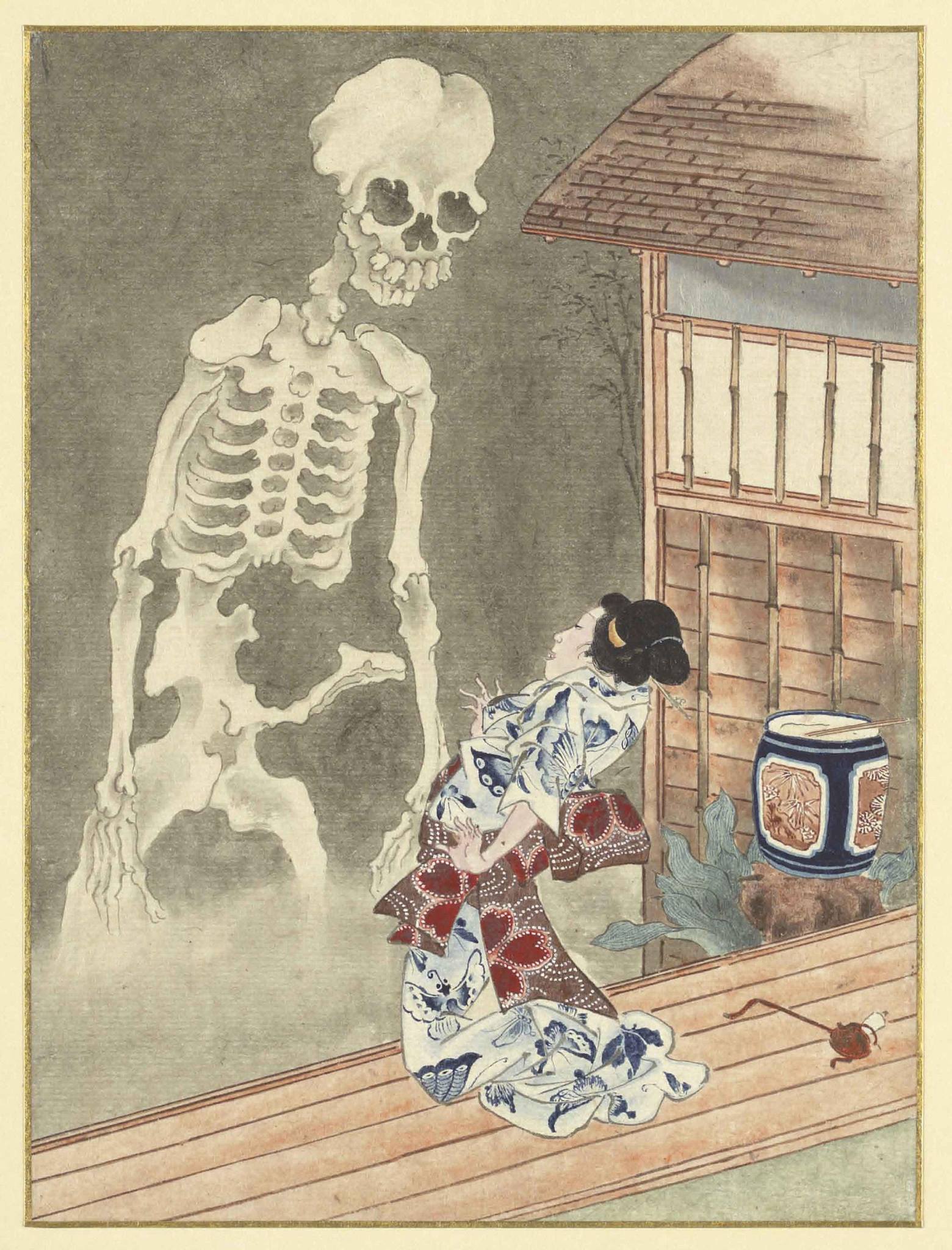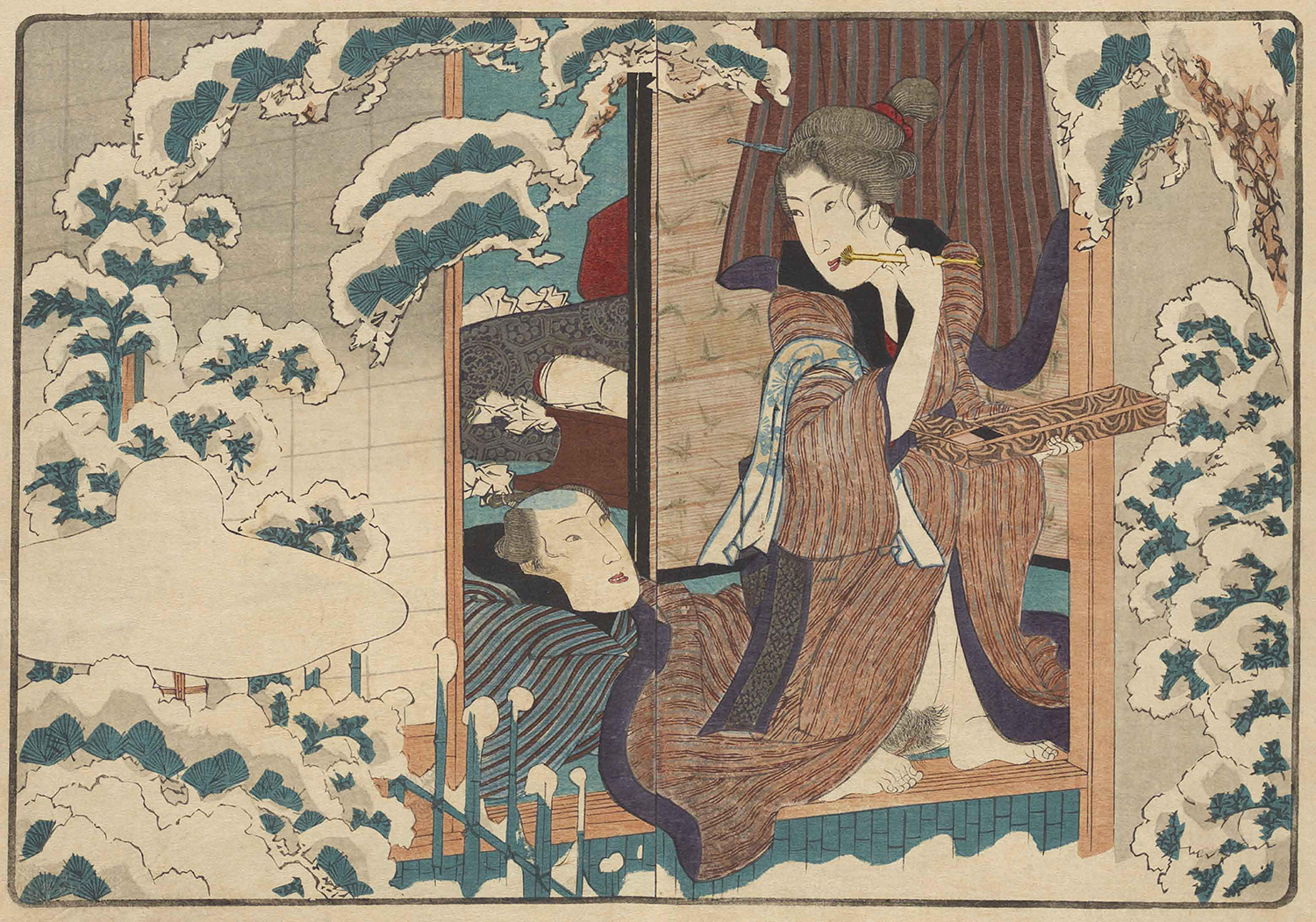ようこそ春画はの世界へ
2013年にイギリスの大英博物館で春画展が開催され、日本でも2015年に春画展が開催されました。近年再び春画が注目され「春画女子」なる言葉までつくられました。
知れば知るほど面白くなる春画。もっとカジュアルに春画を楽しんで欲しいし、春画をとりまく時代の変化などを知ってもらおうと思い、このサイトをつくりました。
「春画のはじまり」
平安時代初期に中国から《えん息図(えんそくず)》と呼ばれる性愛書が伝わりました。
室町時代には春画は庶民にも広がり、皇帝と寵姫の性生活を描いた「春宮画」が広まり日本でも春画は人気になりました。

木版摺りにより春画も大量生産され、庶民にも広く春画が普及し、春画は「笑い絵」「ワ印」「枕絵」「艶本」とも呼ばれるようになります。春画は夫婦で楽しむものだけでなく人々を笑顔にするものであり、嫁入り道具や火災除け、戦争のお守りにも使われるようになります。日本人が性をおめでたいものとしてパワーをもらおうとしていることがわかりますね。

Welcome to the shunga world.
Shunga represents an extraordinary body of explicit erotic art, comprising many thousands of images, often with texts, produced in Japan between about 1600 and 1900. They took the relatively discreet formats of the painted handscroll, printed illustrated book or album.

Shunga is a powerful evocation of the pleasures affective lovemaking. Beautifully crafted, painted or printed images are composed so as to emphasize the intimacy and mutuality of sex.

A shunga terminology is confusing and varied here is a brief review of the vocabulary that appears in the essays.
Ensokuzu/onsokuzu , an ancient Japanese word, already anchaic in the Edo period, referred to erotic pictures.
In the Edo period itself sexually explicit images were euphemistically called makura-e 枕絵 ('pillow pictures'), warai-e 笑い絵 ('laughter pictures'), wa-jirushi ワ印 ('wa-mark,taking the first syllable of 'warai')
《参考文献》
「春画入門」車浮世著 文春新書
「江戸の春画」白倉敬彦著 講談社学術文庫
「Shunga sex and pleasure in Japanese art」The British museum
画像提供元:国際日本文化研究センター
